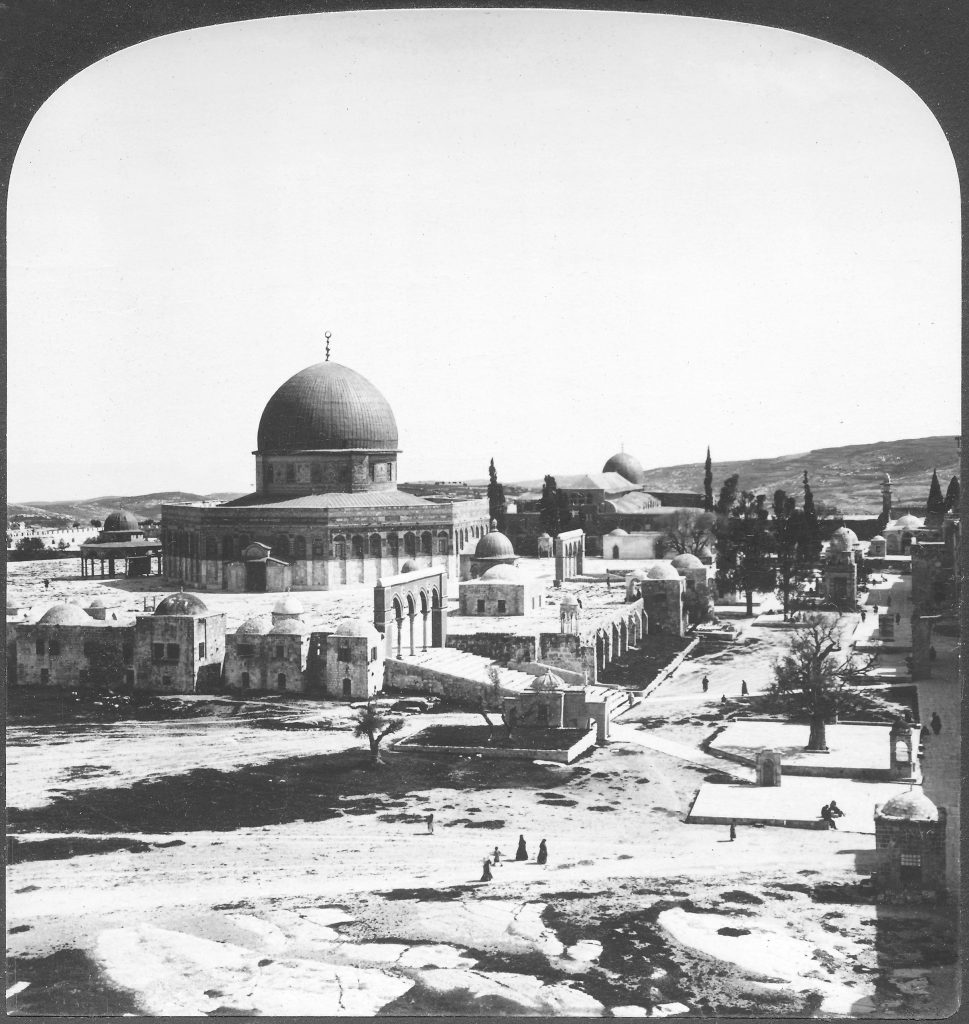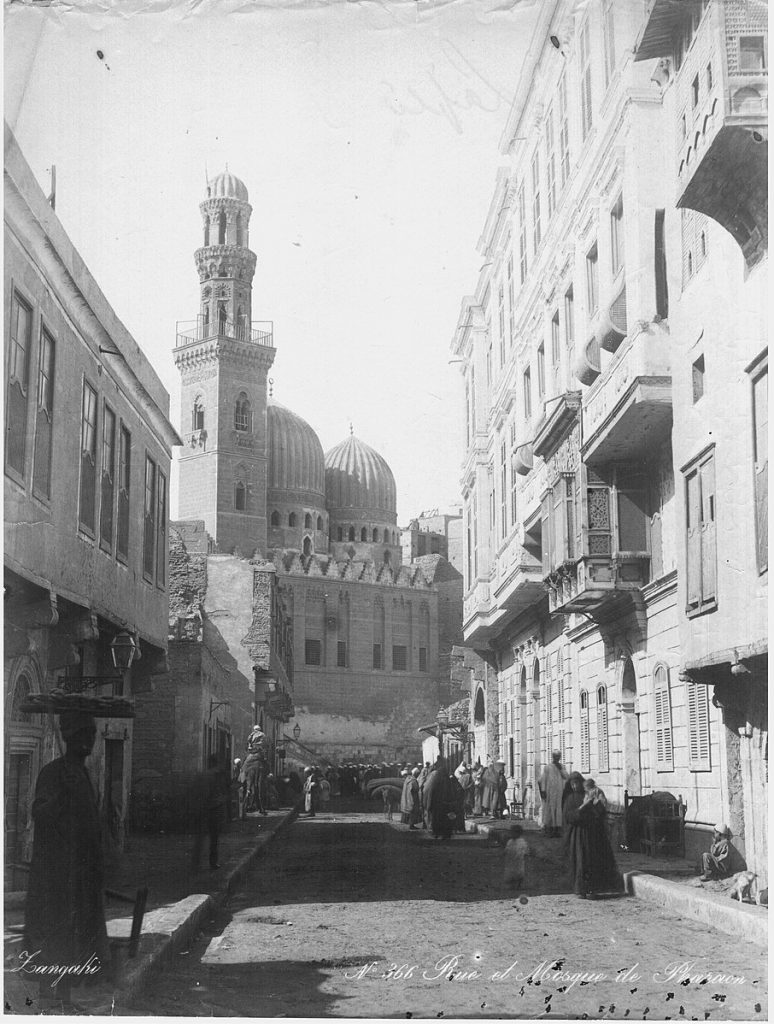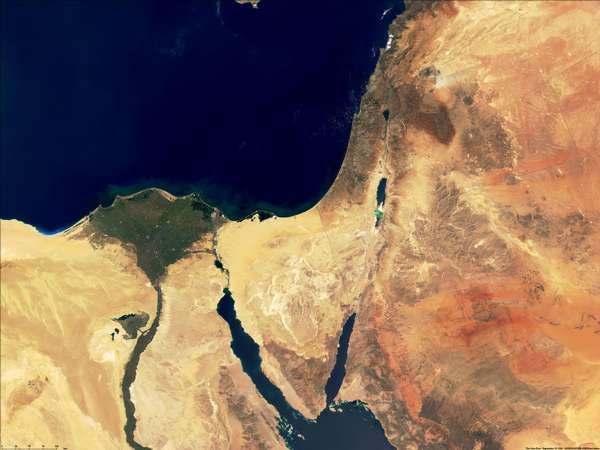I sat down and popped open my laptop to check Scoop Empire’s Instagram page. Wanting to see how much interest an article I had written had got and whether I should write more on the same topic, I checked the number of likes and read through the comments. But jumping out from the screen, one comment on an article that had the phrase ‘Middle East’ in the title demanded, ‘Stop promulgating the phrase “middle east.”’ The comment explained that ‘No such place exists. Just like there’s no such place as the “middle south”’ and went on to state, ‘The term was used by colonizers and oppressors. Let’s evolve! <3’. He was right in many ways, but why didn’t any other terms immediately come to mind? And why does every news organization and organization, Arab or otherwise, still refer to the region as the Middle East?
East of what? In the middle of where? What exactly is the ‘Middle East’? Once one starts asking a few questions, the originally simple term ‘Middle East’ begins to open up a complicated picture of a colonial past and conceptual frames that structure our understanding of the region. The Merriam-Webster Dictionary gives a slightly slippery and vague definition of the ‘Middle East’, describing it as a noun for ‘the countries of northern Africa and southwestern Asia that are on or near the eastern edge of the Mediterranean Sea’. Curiously, there is no standard definition of which countries these include, and whether this includes countries like Turkey, Iran, Sudan, or even Pakistan can depend on the topic of conversation and varies between international organizations. As such, the ‘Middle East’ is not a scientific or strictly geographical term, but more of a social construct to help frame and conceptualize the world. But the questions we need to ask are, conceptualized by who? How did this frame or limit our understanding of the region? And if not the ‘Middle East’, what else should we call this region?

East of what? In the middle of where?
The term ‘Middle East’ is thought to have originated in the stuffy and pipe smoke-filled halls of Britain’s colonial bureaucracy in London in the mid-1800s, specifically in the India Office. As its use grew in government departments overseeing colonial territories, the term ‘Middle East’ was first seen in print in 1902 in the British press and soon thereafter become a commonly used term. Although revealingly, the term was almost exclusively used in conversations about colonial strategizing and securing the British Empire’s route to India via the Suez Canal. In the same way that our very notion of time begins and ends each in relation to London, with Greenwich Meantime, our notion of space is also constructed as starting from the capital of the then British Empire. The geographical and ideological compass that determines the rest of the world was firmly centered in the center of colonial power in London. The Americas were the West, Africa was the South, Asia and Russia were the East, and Great Britain and surrounding European nations simply were. Understood to be at the center of the world, as drawn in maps and in the minds of people ideologically. It was for other countries to locate themselves in relation to the center of European colonial powers as if they had little to no importance outside of their relation to Europe. As such, the ‘Middle East’ only exists in so far as it relates to being to the east of Great Britain and in the middle of its colonial sphere of influence. It only makes sense to refer to the region as the ‘Middle East’ if you’re in Europe, but what about 90% of the world’s population?
The term ‘Middle East’ also begs the question, in the middle of where? Looking back at the term’s colonial origins, the ‘Middle East’ sits uneasily and sometimes overlapping between the equally outdated terms ‘Far East’, referring to East and Southeast Asia along with the east of Russia, and the ‘Near East’, which refers to the area encompassing Turkey down to Egypt and out towards Jordan and Iraq.
As the use of the term grew and became part of the English-speaking lexicon, the colonial machine further solidified and officialized the term through the naming of government departments. The Middle East Command overseeing British forces in the region was founded in 1939 in Cairo and soon government and non-governmental institutions around the world followed suit. Following the Washington D.C.-based Middle East Institute being founded in 1946, the US government’s first official use of the term was in 1957 with the Eisenhower Doctrine. However, while the term ‘Middle East’ is as widespread and dominant as ever, following the rise of the United States as the global power replacing the United Kingdom, our ideological bearing points that situate a global compass determining what is East or West have changed to suit new geopolitical realities. The center of the compass now rests in Washington D.C. and has incorporated Northern Europe geographically and politically into the sphere of the ‘West’.

What’s in a name?
Shakespeare in his play Romeo and Juliet has Juliet proclaim ‘What’s in a name? That which we call a rose by any other name would smell just as sweet’. The Eurocentrism and colonial framing of the term ‘Middle East’ certainly doesn’t take away from the beauty and diversity of the region, like Shakespeare’s rose. However, better terms can be used that present the region in its own right, which highlights the diversity and richness of the region and its interrelation with relation with the rest of the world, and not just through its experiences of colonization by European powers. Letting go of colonial terms and phrases is symbolic of the overthrowing of colonial influence and also opens up new ways of conceptualizing the region from the experiences and in the interests of those who live there. But what new term could we use?
The Arab World is often used interchangeably with MENA, but this ignores the fact that the two terms cover different sets of countries. While most definitions of the Middle East include Turkey and Iran, the Arab World only pertains to Arab-majority nations or countries in the Arab League. It makes sense to talk of Iran and Turkey as part of the same conceptual region in numerous contemporary and historical issues and talking about the ‘Arab World’ doesn’t let us do this. The Arab World also ignores the presence of other ethnic groups in the region like Nubians, Kurds, and Turkmen who can be found in large numbers in Arab-majority nations. The Arab World is a great term, but it does not refer to the same area as the ‘Middle East’.
Another proposed alternative that is often used in the news and on TV is the equally imprecise and problematic Islamic World, when used to describe a region and not the larger Muslim community, or Ummah. Strangely, the notion of the Islamic World centers itself around the area we normally refer to as the ‘Middle East’, completely ignoring the fact that only less than 20% of the world’s Muslims live there. A geographic definition of the Islamic Word that ignores 80% of the world’s Muslims, mostly in South and Southeast Asia, presents an inaccurate and stereotypical image of who Muslims are, ignoring the great diversity of peoples and cultures that follow the faith. Equally, the term Islamic World fails to acknowledge the religious diversity in the region, be it the large Christian populations in Egypt, Lebanon, and Syria or smaller minorities like the Druze, Yazidis, Zoroastrians, and others spread across the region. We don’t talk of Europe as the ‘Christian World’ despite it being overwhelmingly Christian, so we should we describe the region in the same way?
Presenting itself as the best option to replace the ‘Middle East and North Africa’ and its acronym MENA, is WANA, standing for West Asia and North Africa. This, admittedly, boring and straightforward term describes a strictly geographical area that incorporates an interconnected region relevant to contemporary and historical conceptual frames that we use when talking about the ‘Middle East’. Former Indian prime minister and notable supporter of anti-colonial struggles worldwide Jawaharlal Nehru all the way back in 1934 wrote about his disdain for the term ‘Middle East’ and only used the term ‘West Asia’, arguing that such a vibrant and historically important region exists outside of its framing by and in relation to colonial powers. Increasingly, the field of postcolonial studies has pushed for the adoption of the term WANA, and some universities have even renamed their Middle East departments and programs. Also, the Amman-based non-profit think tank called the WANA Institute has let go of using the term MENA outright, describing it as ‘geographically ambiguous’. Arguing that, ‘Our region is only east when considered from the perspective of Europe’, the WANA Institute uses the term West Africa and North Africa (WANA) to advocate for ‘a definition of the region less rooted in political geography, but rather in human geography.’
However, while the debate is certainly not new, the list of organizations that have so far let go of the problematic term ‘Middle East’ is relatively tiny and insignificant. Further, its use is almost completely isolated to academic circles at Western universities and disconnected from any larger, particularly grassroots, movement. Arguably at the root of the inability for WANA to catch on and for it to join the lexicon of international organizations, journalism, and the media more generally, is that simply put, nobody has ever heard of WANA. On sneaking in the term WANA into a conversation with a friend to gauge how if all people understood the term, he responded, rather revealingly, ‘Who’s WANA?’
It is telling that despite the commonly accepted pitfalls and problems of the term ‘Middle East’ and the presentation of WANA as the obvious alternative, particularly in journalism, no media organization has yet to officially adopt the term, at least to my knowledge. Without the adaption and promotion of such a term by the United Nations or Arab League, the term WANA currently confuses more than it clarifies to those who have never heard of the term before. The term ‘Middle East’ and its expanded acronym MENA certainly belong to the dustbin of history, and the rise of the term West Asia and Northern Africa, or WANA for short, is certainly inevitable. However, how this will become part of the international vocabulary is not clear to me, and how to push for the use of such terms without confusing or excluding people unaware of the debate presents a challenge to be overcome. But hopefully, the debate will again emerge and we can do away with the outdated term ‘Middle East.’
WE SAID THIS: Arabic For Every Occasion: What Each Country’s Arabic Dialect Is Perfect For



